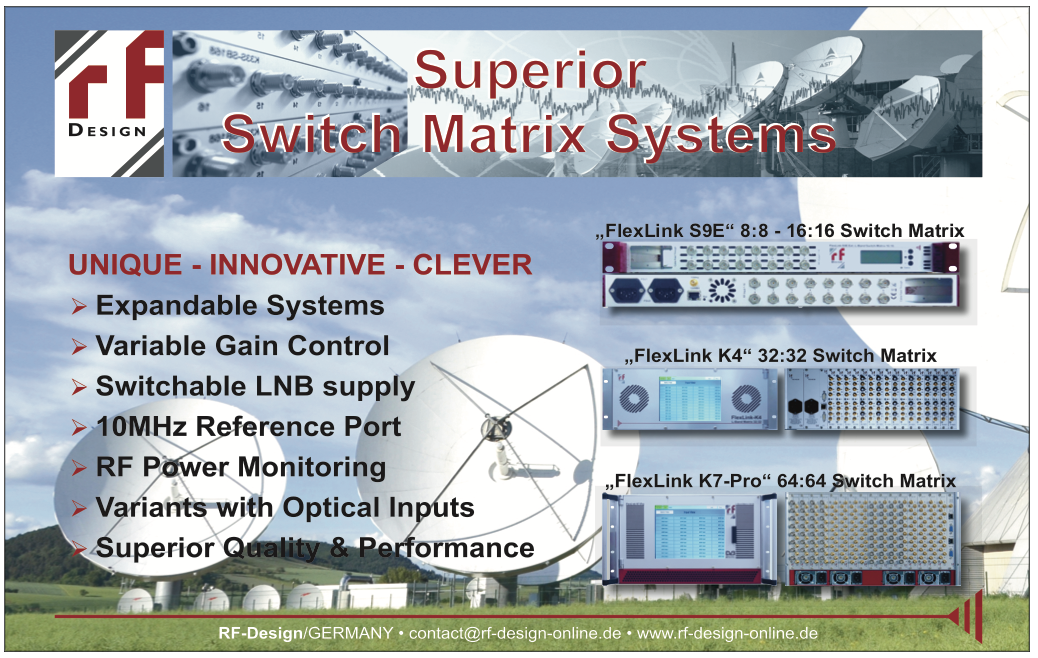Short-wave infrared (SWIR) is an interesting subsection of the electromagnetic spectrum and is generally defined at 900nm-1700nm, but some do stretch it up to 2500nm. Unlike MWIR (mid-wave infrared) and LWIR (long-wave infrared) light, which is emitted from the object itself, SWIR is similar to visible light in that photons are reflected or absorbed by an object, providing the strong contrast needed for higher resolution imaging.
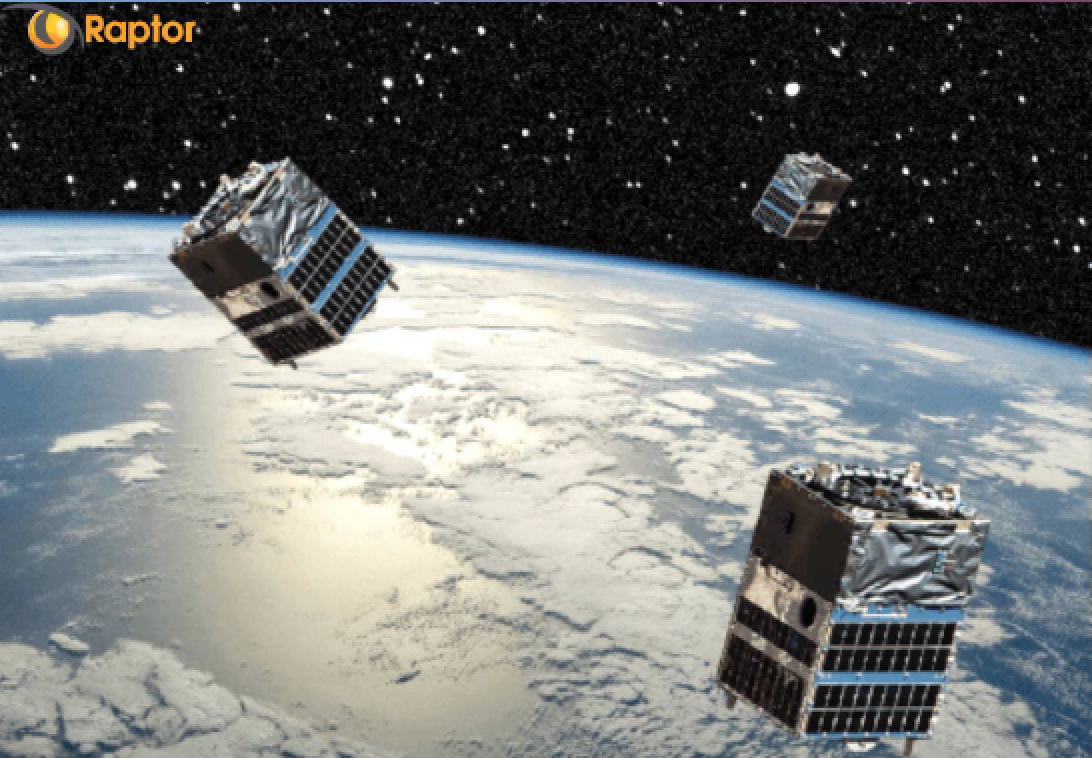
Ambient starlight and background radiance (night glow) are natural emitters of SWIR and provide excellent illumination for low-light or night-time imaging including imaging though fog, haze, cloud and water vapors.
Several applications that are difficult or impossible to perform using visible light are made possible, with superior results, using SWIR imaging, thus enabling the user to ‘See Beyond the Visible.’ The cut off for silicon based sensors is generally 1100nm. Standard CCD and CMOS provide no solution. It is generally when sensors are made with substrates, such as InGaAs, when it starts getting interesting.
SWIR Cameras have been around for the past few decades. Using InGaAs sensors, these cameras offer wavelength coverage from 900-1700nm. InGaAs sensors that have been thinned offer a visible extension from 600-1700nm. There are lots of options from single point sensors to linear arrays through to 2D focal plane arrays.
Cubesats are a class of research spacecraft called nanosatellites or smallsats. Low Earth Orbit (LEO) cubesats orbit the Earth non-stop, every day, taking measurements all over the world. Shipping companies can now track their assets around the world and energy companies can now explore for oil and gas remotely using hyperspectral imaging with SWIR cameras.
SWIR cameras can also measure pollution levels, greenhouse gases and aerosols in the atmosphere. Gases absorb light at specific wavelengths, creating a “spectral fingerprint” for each gas. LEO satellites can find these fingerprints and determine how much of each gas is present in the field of view. Combined with Earth based ground stations, LEO cubesats can now control and direct lasers using SWIR camera technology to enable more efficient 5G data communications in remote parts of the world.
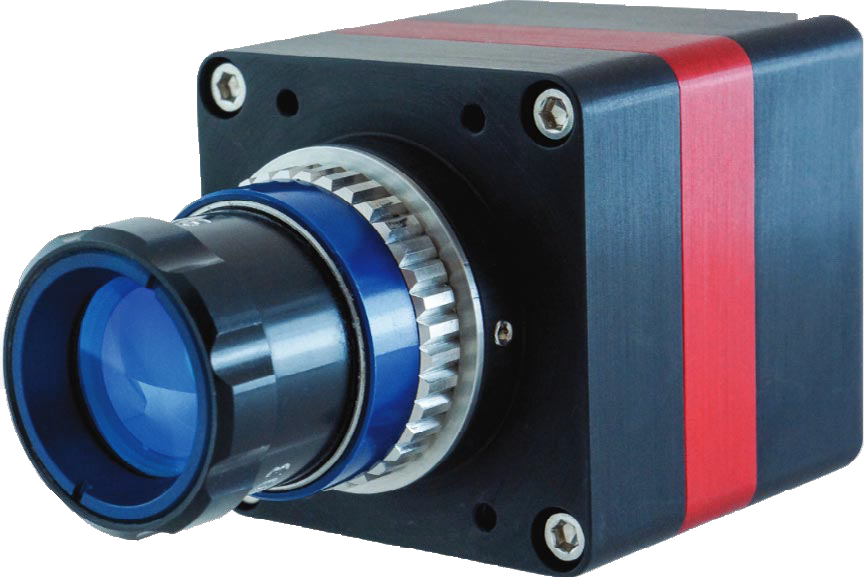
Raptor’s Owl 640 N ultra low noise, digital VIS-SWIR
camera, 15μmx15μm pixel pitch, 18 electrons.
What are the main points to bear in mind when selecting a SWIR camera destined for space?
Space Qualification —- The most common question Raptor gets asked is if our cameras are space qualified. Some of our cameras have been on payloads of several LEO missions that have survived launch conditions and operate well in LEO conditions, where they are not as affected by cosmic rays and other radiation conditions. So it is fair to say that our cameras have “space heritage.” Unfortunately, due to NDAs and commercial IP, we cannot say definitively which missions our cameras have been on, but they have been validated and the company hopes to be on several more missions during the coming years.
Size envelope — Cubesats are built to standard dimensions (Units or “U”) of 10 cm x 10 cm x 10 cm. They can be 1U, 2U, 3U, or 6U in size, and typically weigh less than 1.33 kg (3 lbs) per U. Most projects have a very small footprint when it comes to the optical payload requirement. Not only is volume an issue, but weight and power requirements also are very important. Our COTS cameras are compact and we can also supply cameras with no metal casing, stacked or at board level. The boards are connected with flexi-ridged connectors which means that they can be folded into tight spaces.
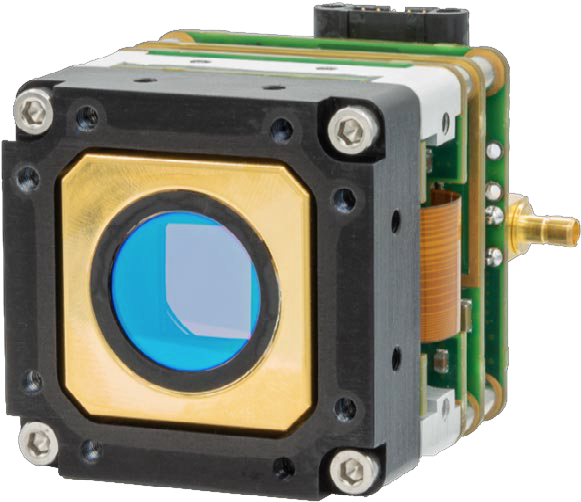
Raptor HD-SDI – Owl 1280 Vis-SWIR Camera with
a HD-SDI connector
Ruggedness — Cameras need to be able to survive the shock and vibration conditions that happen during launch. They also need to be able to withstand exposure to radiation. Raptor has almost two decades experience of working in airborne applications in gimbals and turrets so our cameras are designed to work in very harsh conditions including temperature (from -40°C to +75°C) and humidity. They will also work very effectively in low earth orbit condition in terms of cosmic radiation events.
Connectors — The camera must efficiently communicate with an on-board processor and that means connectors need to be rugged and fit for purpose. Raptor can offer proprietary connectors that can communicate directly with the on-board processor.
Sensor and firmware – There are many options when considering the right sensor. Resolution, pixel size and wavelength. Firmware will determine frame-rate, integration time and read-out noise. Raptor offers a full range of InGaAs FPAs, all offering different advantages. And there are lots of options regarding firmware requirements. It is important to understand which parameters are the most import as there are often trade-offs.
Optics – Most missions fly at altitudes of 350-700km. Earth Observation (EO) payloads will generally have a camera and a small reflecting telescope or a high-powered lens. Projects aim to acquire high-resolution still images and videos with precision of down to 5m GSD (ground sample distance) at, e.g., 400km altitude using COTS parts. If using a SWIR camera, the optical part needs to be SWIR optimized. While Raptor doesn’t manufacture telescopes or lenses, the company does test and validate them with Raptor cameras.
Spectral Filtering – The correct cut-off filters must be employed to narrow down the optimum spectral band. Raptor possesses a great deal of knowledge regarding the best filters to use.
Raptor has become one of the global leading suppliers of high quality InGaAs based cameras. The firm’s reputation for quality and performance has been built over the years with many leading OEMs (Original Equipment Manufacturers) and instrumentation companies working closely with us to develop custom camera solutions that match their exact needs. Raptor low noise electronics design ensures that the images on the company’s cameras are both quantitatively and qualitatively superior to other offerings in the market.

Raptor's original and primary market for the SWIR based cameras has been surveillance, the ability to recognize elements in very low levels of light. Our cameras have been used for border surveillance, aircraft gimbals, UAVs, turrets on vehicles, etc.
For surveillance markets, the cameras need to be compact, rugged, lightweight, low power and reliable ande must be able to work in extremely harsh conditions. Typically, these camera cores will fit into gimbals on the nose cones of aircraft where they will be exposed to very low temperatures and issues with condensation — or, they may be found in turrets of vehicles in hot, humid or dusty environments.
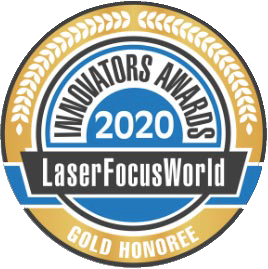
One of Raptor’s strengths is the ability to design cameras to MilSpec standards that ensure that our cameras work 24/7 in mission critical applications. This is often difficult to do as it requires some level of compromise in terms of materials used, processes developed, camera features and technical performance. This is also heavily reliant on price. By working closely with our customers, we can determine the best solution to fit their needs.
In recent years the company has had a number of approaches from aerospace companies looking to put cameras into space. In fact, several years ago, Raptor collaborated with JAXA to put cameras into the International Space Station for an on board experiment. After some essential modifications, the cameras worked perfectly, even in deep space.
Since then, Raptor has supplied cameras, both off the shelf and custom, to various aerospace projects to install SWIR and visible cameras into LEO satellites.

This is an exciting time for EOn and 5G communications. Raptor is starting to grow brand recognition in this space and, as the scientific market evolves into the use of longer wavelengths, the company is well positioned to take further advantage of this need.
www.raptorphotonics.com
Author Mark Donaghy is the Vice President of Sales and Marketing at Raptor Photonics. He can be contacted at this direct email link


